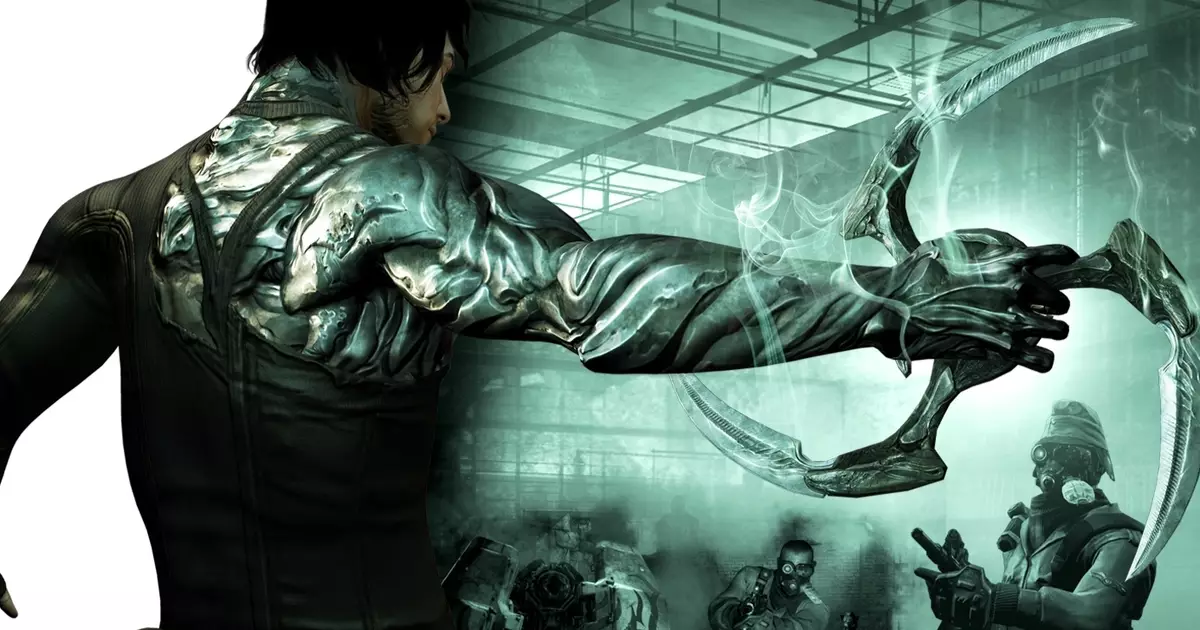Digital Extremes, a name that resonates primarily with devoted gamers, is often recognized as a collaborative force behind the Unreal Tournament series alongside Epic Games. Yet, nestled in their portfolio is a lesser-known title called Dark Sector, released in 2008, that serves as a fascinating chapter in the evolution of video game design. While it may not have received the acclaim that many expected, the legacy of Dark Sector is much more significant than its initial reception suggests.
Dark Sector embodies the quintessential double-A action game style of its time, marked by gritty narratives and brooding protagonists. Players control Hayden Tenno, a character with a unique bioweapon known as the glaive—essentially a boomerang designed for brutal efficiency. This mechanic allows players to engage in combat, solve environmental puzzles, and retrieve items from afar, which should have made for an exhilarating experience. However, despite its innovative concept, Dark Sector often gets lost in the annals of gaming history, overshadowed by more successful titles of its era.
The game initially embarked on a different narrative path, originally envisioned as a sci-fi adventure set in a far-off universe populated with futuristic technologies and exosuits. However, as development progressed, the creators opted for a more terrestrial story, perhaps in an attempt to align with the interests of a gaming audience that was less receptive to overt science fiction themes at the time. This decision reflects the broader industry trends of the mid-2000s, where creators often padded their narratives with elements aimed at mimicking popular action films, rather than experimenting with fresh, original concepts.
Years after its release, Dark Sector’s identity has morphed into a fascinating case study of how creative ideas can evolve. It is often seen as the precursor to the immensely popular Warframe, another title born from the ashes of a project that initially struggled to find its footing. Warframe developed the same underlying mechanics and stylized violence that endeared players to Dark Sector but did so with a more polished execution and deeper lore. Furthermore, players who venture into Warframe will find subtle nods back to Dark Sector, particularly in the glaive mechanics that have been expanded to allow for more dynamic gameplay.
Digital Extremes’ decision to offer Dark Sector as a free title on platforms like Steam also illustrates their awareness of the game’s potential appeal to new audiences. The giveaway was timed to coincide with the release of a new Warframe expansion as a means of celebrating the lineage of their creations. In doing so, not only does the studio recognize the importance of their past, but it also bridges the gap between old and new players, allowing shedding light on an often forgotten entry in their catalog.
While a portion of the gaming community views Dark Sector as a flawed gem, its resurgence through free availability indicates a growing interest in digital preservation and rediscovery. The gaming landscape is littered with titles that deserved more attention than they received, and Dark Sector is undoubtedly one of them. Even if players find the gameplay mechanics to be outdated or the story lacking depth compared to contemporary titles, the nostalgia factor cannot be ignored.
Interestingly, the mention of other notable games from Digital Extremes, such as The Darkness 2, adds another layer to this exploration. By drawing comparisons between these titles, one can appreciate the evolution of game mechanics, storytelling, and immersive experiences within the studio.
In retrospect, Dark Sector stands not only as a testament to Digital Extremes’ early ambitions but as an integral part of the lineage that led to one of the most celebrated free-to-play games in the industry today, Warframe. As players explore this world, they are encouraged to consider the stories behind the games and the evolution of ideas, acknowledging that sometimes even the most unassuming titles can have surprising relevance. As Dark Sector finds new life as a free offering, it beckons gamers to reflect on the rich tapestry of gaming history while reminding developers of the importance of their creative journeys.


Leave a Reply